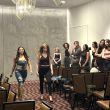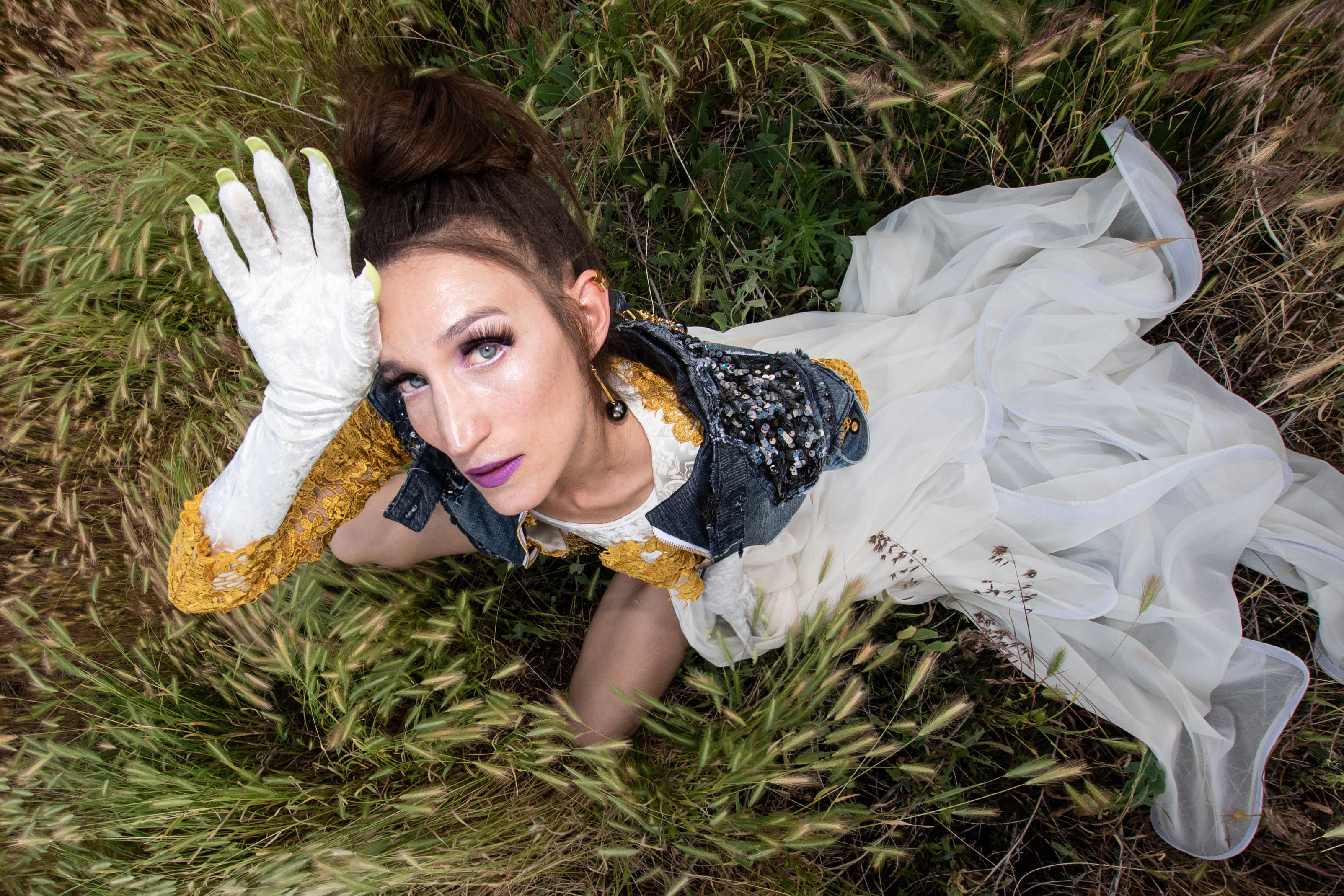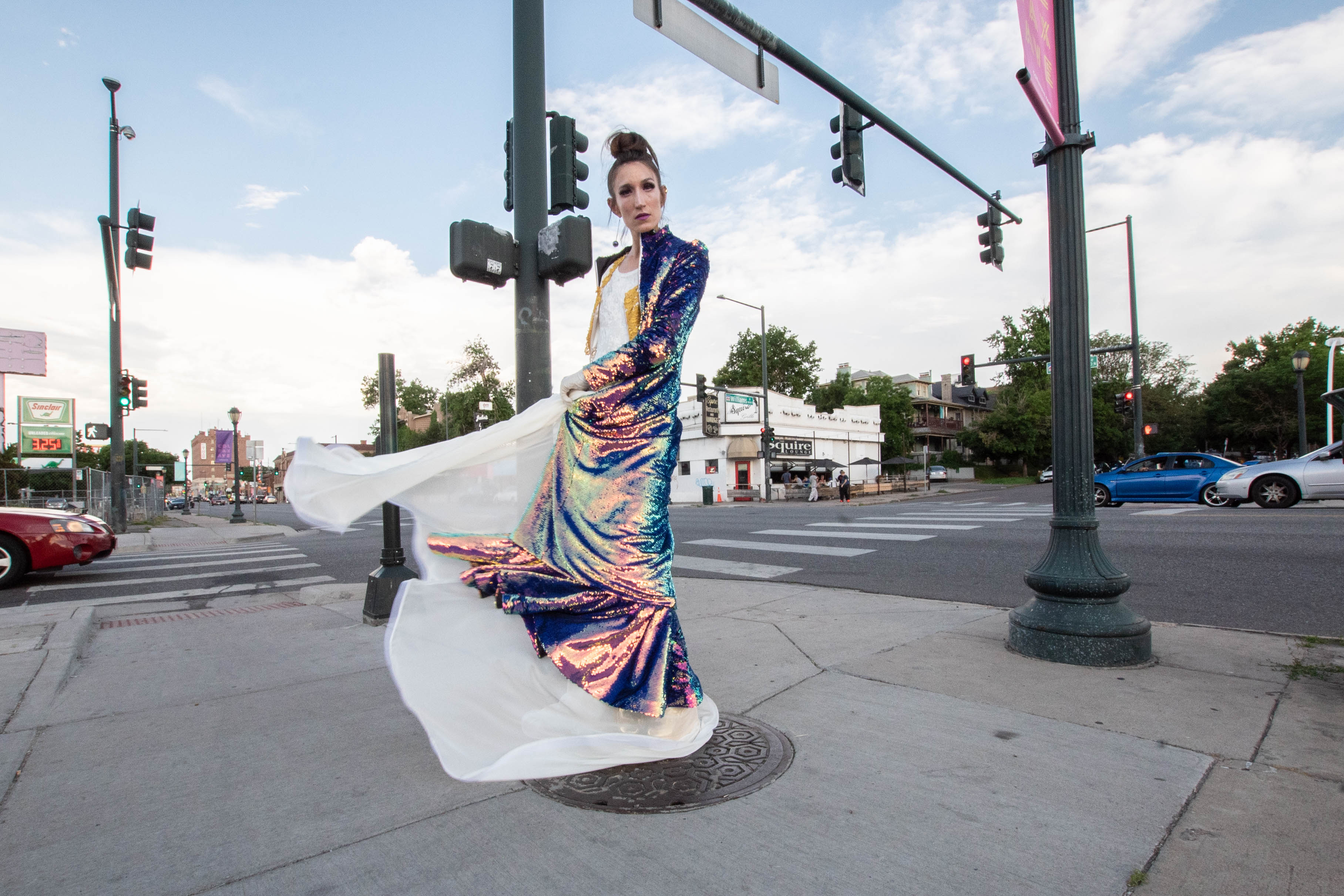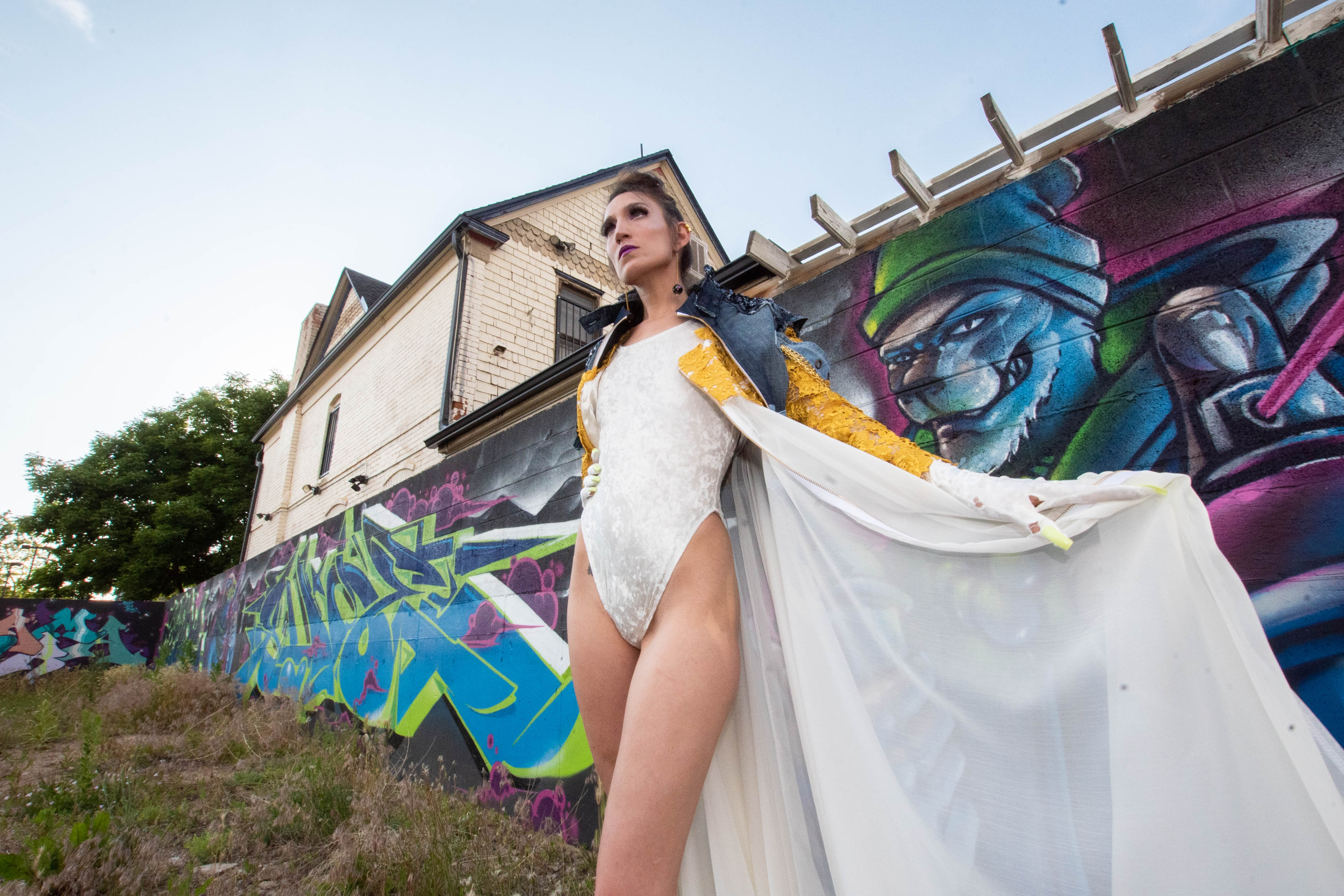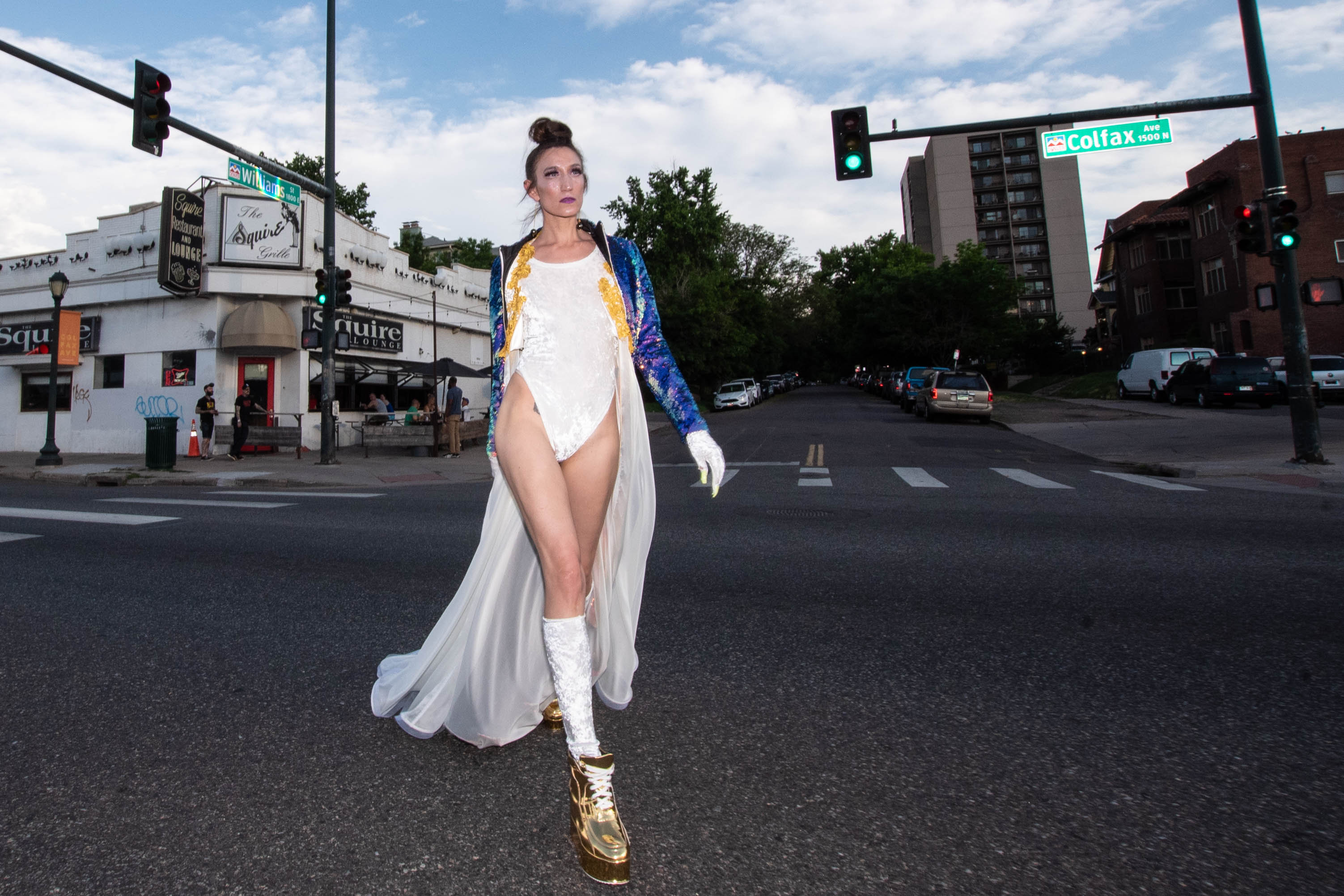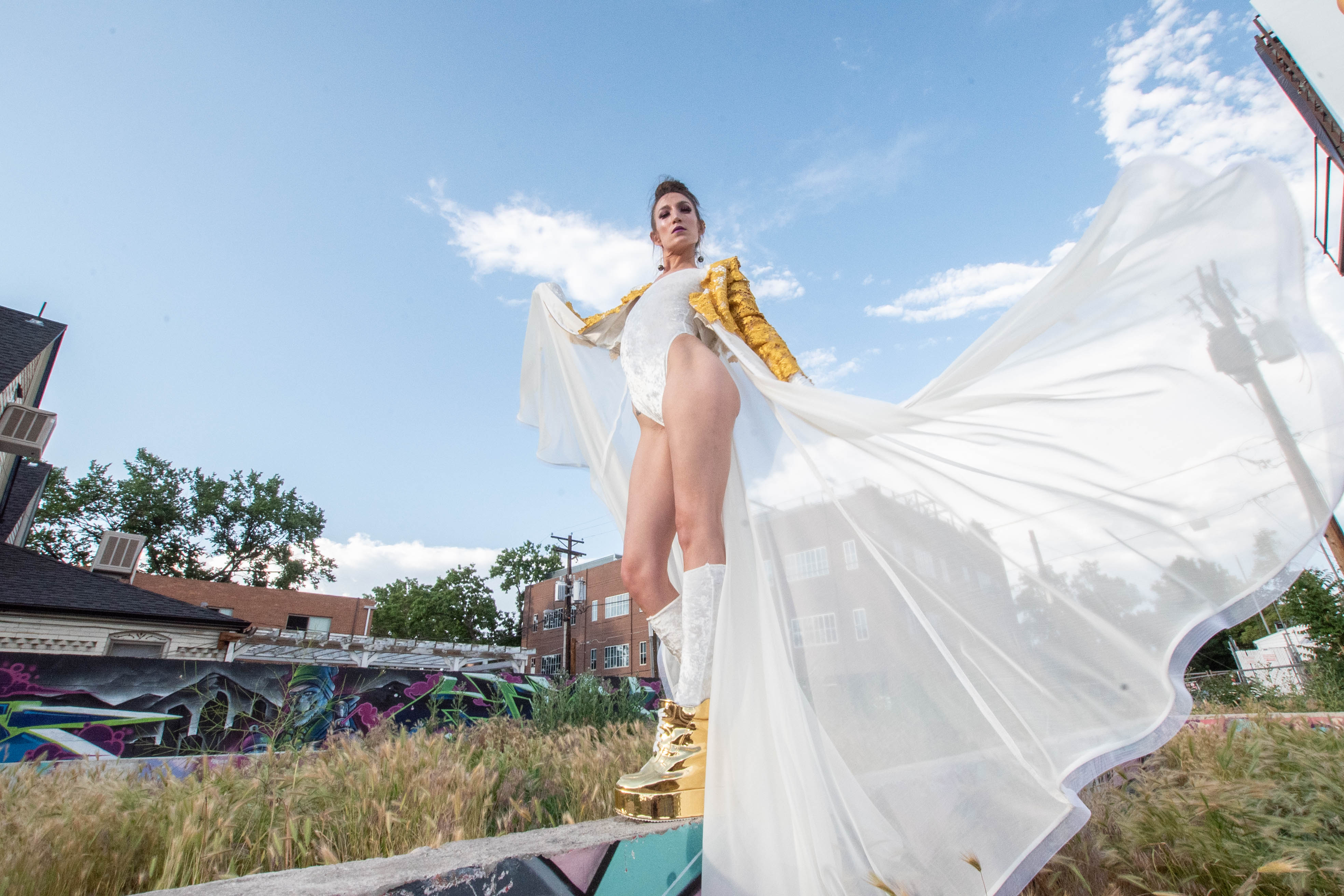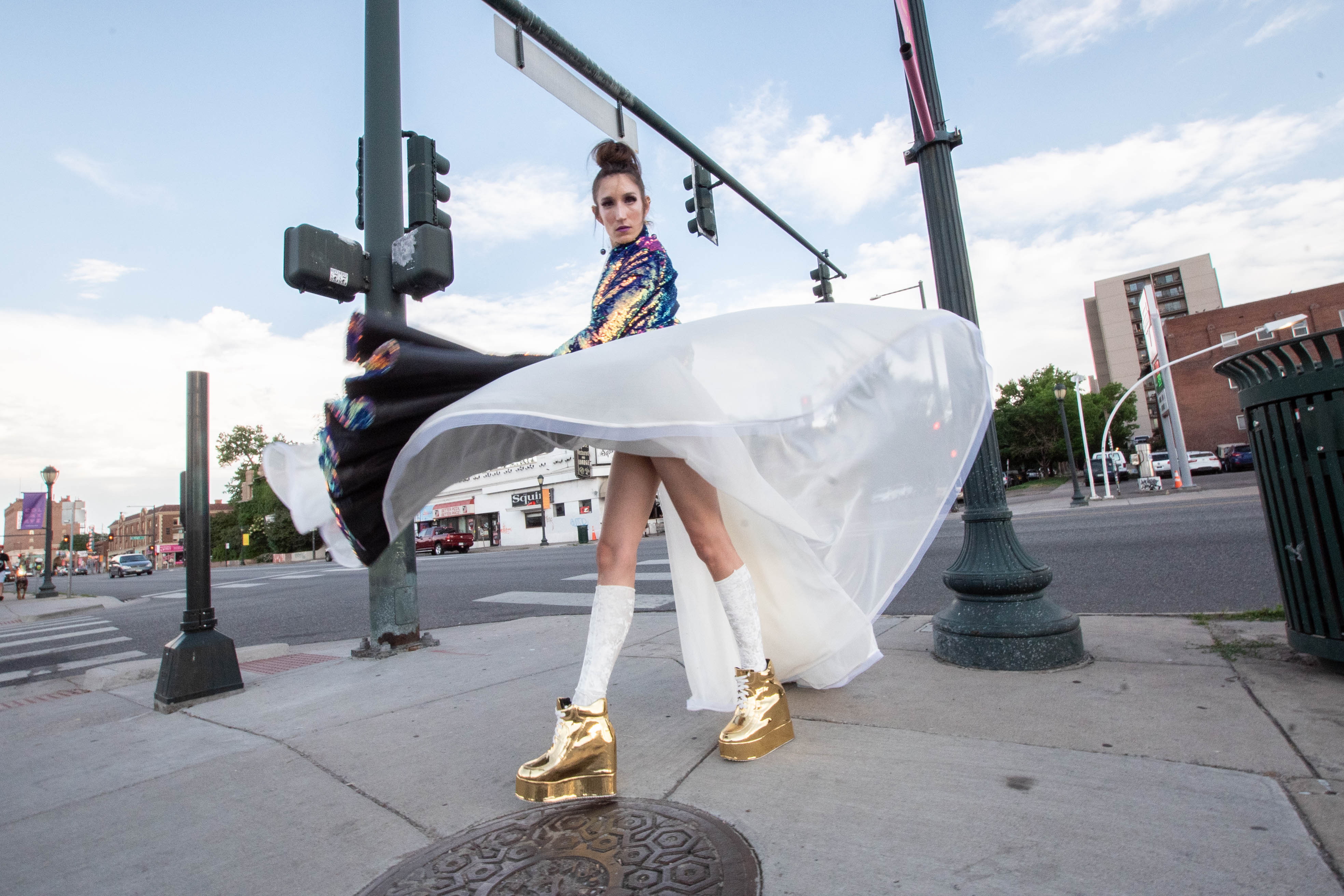Throughout the past year, fashion designers around the Denver area have been preparing to debut their collections at Denver Fashion Week (DFW), which starts on June 24. Focusing on night two, which features a glam style, Nicholas Anthony Clothing created by Anthony Heimann will be among one of the designers showing a new collection. A local high fashion designer, Heimann shared insight into his sustainable futuristic fashion collection with 303 Magazine – giving us the inside scoop on the inspiration, use of fabrics and patterns, and the message that is meant to be conveyed in the collection this year.
Over the past years, Heimann has focused more on gender fluidity and menswear to bring more attention towards fashion for an equitable future. In his collection for DFW, Heimann has created a “future-forward” concept of growth and expression through clothing.
303 Magazine: What is your collection about?
Anthony Heimann: This season, Nicholas Anthony Clothing’s collection focuses on gender bending and androgynous designs because I see the future going in that direction. I pay attention to youth and their attitudes and perspectives, especially towards gender neutrality and acceptance of different backgrounds and lived experiences. Masculinity and femininity are defined by society, and I think we are more understanding now of the fact that gender is a social construct and not a binary concept.
When it comes to the looks I’ll be showing at Denver Fashion Week, I’ve been including and designing for men for a few years now, because I believe that men need more fashion choices, especially considering that men, I think, have been forced into a gender role, much like women though quite different roles, but one that doesn’t value choice or options especially when it comes to fashion; masculinity to me seems to be very limited in dimension. Finally, bringing that all together, I think fashion can help foster a broader acceptance among all people and that’s just one place to start on this journey we find ourselves on recently, questioning our historic systems for a more equitable future.
303: Where do you find inspiration for your designs?
AH: Fashion history has always inspired me. I’m grounded in Victorian (1800s) and Edwardian (early 1900s) fashions, and recently I’ve been incorporating inspiration by Etruscan (900s BC), Egyptian (3200-300s BC) and Byzantine (300s BC-1400s) fashions. I like the idea of combining periods and imagining what fashion would look like today if we had seen different historic styles become popular thus influencing what present day fashion would look like. I’m also inspired by current events. This year, some big news has been the emergence of the 17-year cicadas. My collection this season is called CicadaX which represents the merging of the present (symbolized by the cicada) and the past with glittering throwback silhouettes inspired by the ’80s and ’90s, merged with empire cuts and dramatic trains from the 1800s. The cicada emerges from a hiatus as a new, shimmering life but it’s emerging 17 years after the last generation…how things have changed in 17 years, they must be unrecognizable to this year’s cicadas compared to their parent’s experience, though isn’t that true of us too? CicadaX represents what’s inside of all of us that may take years to cultivate before it emerges. Time makes amazing things.
303: What message do you want your audience to receive?
AH: To weave this all together, the message I’m sending is that the future will look different, and the choices we make now do impact the future. We have to do some soul searching, though, to make better choices that can lead to a better future. Like the cicada, that work first starts within: they’re survivors and adapters. We have to work on ourselves first before we can expect to start to work on the world and for the world to work with us. Once we have the confidence, adaptability, resilience, acceptance to become our best selves, we will collectively begin to see a shift towards a better future for us all.
303: How have past experiences influenced what you create today?
AH: Relevant to this season, I remember back in the ’90s when I was growing up thinking, “We gotta do something about this…” thinking of the fashion situation. It makes me laugh now, especially since I’m including obvious ’80s and ’90s elements in this season’s looks, but I do appreciate the celebration of individuality that I could occasionally witness during that period. As I grew up, I came to find fashion as a way for me to express myself, and even buck the system. In the last few years, I’ve been thinking of how my family has inspired me and how I can honor them now even if they won’t physically be at my shows.
303: Have you used new sustainable materials in your collection?
AH: Yes, making sustainable choices in selecting fabrics and materials is very important to me. In my collection this season, six pieces are entirely made from thrifted materials. I have a lot of experience using recycled materials in my designs, though I haven’t always embraced the technique. Now though, I realize I need to do my part in working to inspire sustainable, upcycled and slow fashion, especially considering fashion’s impact on our environment. People throw out clothing every day and it will end up in the landfill for decades at least. I think about how much goes into making a piece of fabric or clothing, from the resources like energy and water used to grow, manufacture, and ship a product. By choosing to reuse material, I can help to reduce how much energy is used in my designs, and a shift in the whole industry could save a lot of resources otherwise wasted when we throw clothes into the trash. So why not, for the sake of our planet, get better at sustainable fashion.
303: Did you experiment with anything new for this collection?
AH: I’m always experimenting with silhouettes and pattern manipulation. Like Alexander McQueen, I’m not afraid to slash up a pattern and make something totally different. I like to defy gravity and convention. This season, I focused on a high fashion take on things you’d wear every day, but with a modern, gender-bending twist. I’m showing jackets with different sleeves or constructed from surprising materials in a gorgeous final product that anyone could wear. I’ve introduced some spirit in each look too with sheer trains for a touch of modesty over sexy takes basics. I love how it’s come together in an edgy, glamourous iteration on how I think we should be strutting down Colfax or Cherry Creek.
303: Where do you get your fabrics and other materials?
AH: For this collection in particular, I got a lot of material from thrift stores and material people have given me. I usually try to thrift linings as often as possible in almost every collection. I also use fabric from family and friends, or even strangers, who give me their unused material. I have a stash of fabric from years that I use from time to time. I’m very open to taking what people aren’t going to use, even if I don’t know what exactly I’ll use it for right away. Otherwise, I spend a lot of time looking and waiting in stores or online for the perfect material. The hardware store can also be a surprising place to find materials.
All Photography by Roxanna Carrasco


